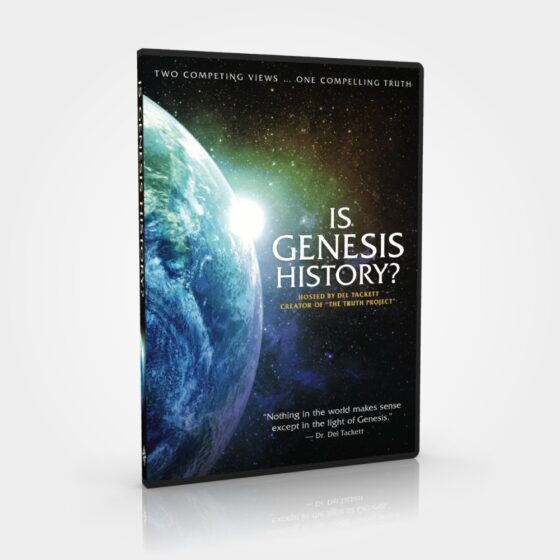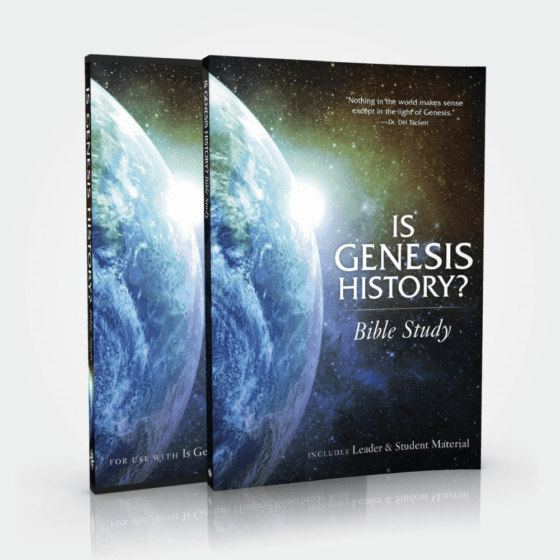During the Is Genesis History? 2017 Conference, Dr. Danny Faulkner gave a talk comparing the two paradigms of earth history. We have provided it here first, then it is followed with a comparison of the two basic views: young earth versus old earth.
A Bit of Background
There are two basic views concerning the history of the earth, with the essential difference being their views of time.
- The young earth, Historical Genesis view says the earth and universe are less than 10,000 years old and that the events recorded in Genesis happened in a literal way.
- The old earth, Conventional view says the earth is approximately 4.5 billion years old and the universe is 13.7 billion years old, with differing parts of Genesis 1-11 being symbolic or non-literal.
All who hold to the Conventional view agree on what may be termed cosmic evolution or development (the first 9 billion years of the universe) as well as geological evolution or development (the next 4.5 billion years when the earth was forming). They agree on the Big Bang, the formation of atoms to planetesimals to galaxies, how volcanic forces shaped the earth over billions of years, and the deposition of the fossil record over long ages as oceans slowly transgressed and regressed many times over the continents. They agree there was a local flood in the Middle East at some point in the last 10,000 years which was recorded in near eastern literature.
In other words, there is enormous agreement on all the primary events that happened during the 13.7 billion years of the history of the universe.
There are, nevertheless, variations within the Conventional view in terms of the causes of some events and the appearance and development of biological life. Within the Conventional view, there are three different approaches to these questions:
- Progressive Creation – God created complex marine and animal life in 20+ unique but progressive creation events every 20-30 million years, with numerous extinction events happening throughout the last 540 million years.
- Theistic Evolution – God created bacterial life that He guided over billions of years to evolve into all the life that has lived on this planet. Instead of unique creations, God used a form of descent from a common bacterial ancestor.
- Atheistic Evolution – After the spontaneous appearance of life, mutations and natural selection acted over billions of years to evolve into everything that has lived on this planet. Nothing is created, but everything alive today descended from a common bacterial ancestor.
We will try to note any distinctions under the Conventional view below. The point of this exercise is to try to reveal the differences between the two views in terms of the natural history of the world.
[A technical note: One criticism of Is Genesis History? argues the film creates a false dichotomy by positing only two basic views of history. The fact that within the conventional view there is agreement concerning 96% of the events that occurred in the astronomical and geological history of the world for the first 13.1 billion years, including much of biological life and extinction over the next .6 billion years, demonstrates there is really just one view of history with slight variations. Those variations in causality and biology occur only within 4% of their history of the world (the last 540 million years).]Questions for Comparison:
How long did it take for the earth to be formed and become what it is today?
Historical Genesis
3 normal days of rapid transformation from a water ball to a livable biosphere.
Conventional
4 billion years of slow development from accretion of planetesimals, to a molten ball, to a livable biosphere.
How long did it take for God to create the sun, moon, and stars?
Historical Genesis
1 day; on the fourth day God formed the universe, the sun, and the moon.
Conventional
Over 10 billion years; about 4.5 billion years ago, our solar system slowly emerged out of a swirling cloud of gas and dust; first came the sun, then the earth, and finally the moon over hundreds of millions of years.
How long are the days in Genesis 1?
Historical Genesis
A day is a normal rotation of the earth marked by mornings and evenings, just like we experience every day.
Conventional
A “day” is a symbol that stands for varying periods of time lasting from hundreds of millions of years to billions of years; or, it is not meant to refer to normal time.
How were plants and animals created?
Historical Genesis
God created all the unique kinds of plants and animals over 3 days, designing them to reproduce according to their particular kinds. (Plants on Day 3; Fish/Birds on Day 5; Animals/People on Day 6)
Conventional
Progressive Creation – God created unique plants and animals during 20+ progressive creation events over hundreds of millions of years.
Theistic/Atheistic Evolution – God/random chance developed all living creatures from a common bacterial ancestor over billions of years; there are no unique creations of kinds.
How and when were man and woman created?
Historical Genesis
God created man out of the dust, and woman out of man on the sixth day of creation.
Conventional
Progressive Creation – God uniquely created a man from the dust and a woman from man 50,000 to 200,000 years ago.
Theistic/Atheistic Evolution – God/random chance developed a group of pre-human hominids and the first man and woman were either chosen out of this group, or are symbolic ideas for that group of hominids.
When did death enter the world?
Historical Genesis
Death entered the world as a result of Adam’s disobedience, affecting both men and animals. At the same time, God cursed the creation with a “bondage to decay” (Romans 8). Prior to the Fall, there was no human or animal death, and the creation was “good.”
Conventional
Animal death existed for over 500 million years before Adam and Eve; this resulted in the death of billions of animals and the extinction of thousands of species.
Progressive Creation – Human death was the result of the disobedience of Adam.
Theistic/Atheistic Evolution – Human death occurred before the disobedience of Adam, and is actually an important aspect of evolutionary development by natural selection.
Are the genealogies of Genesis useful for tracking the passage of time?
Historical Genesis
The genealogies of Genesis 5 and 11 are accurate records of father-son relationships from Adam to Noah to Abraham and can be used to track time.
Conventional
The genealogies represent a small percentage of the father-son- grandson line; up to 90% or more of the genealogical links are missing, so they cannot be used to track time. Some think the genealogies are symbolic.
Was the Flood global or local?
Historical Genesis
The Flood was a global catastrophe where the floodwaters covered the tops of the mountains existing at that time in history.
Conventional
The Flood was a local/regional catastrophe somewhere in the Middle East; it did not affect the entire world.
Did all the humans, birds and animals living on land die in the flood?
Historical Genesis
Yes, all humans, birds, and land animals died during the Flood, with the exception of Noah, his family, and the animals on the Ark.
Conventional
No one holds that all land animals and birds died.
Some hold that all humans died, but not all animals and birds.
Others hold that only humans, animals, and birds living in the region affected by the flood died.
Was there a major dispersion from the tower of Babel as a result of the confusion of languages by God?
Historical Genesis
Yes, there was a real confusion of languages that led to a dispersion of people around the world.
Conventional
Some hold that there was a real confusion of languages and a real dispersion. Others hold that this was a symbolic event and that human language evolved over tens of thousands of years.
Questions for discussion:
Are these views of history able to be reconciled with one another, or are they each telling a different story? Is there truly a conflict? What events in the conventional view don’t fit with specific comments of Biblical authors?
- God declared the Creation to be “good” when He finished with each day. How does that fit with the idea of millions of years of death?
- In the fourth Commandment, God bases our normal week of six days of work and one day of rest on the seven days of the Creation week. Why does this comparison make it difficult to interpret the days as long ages or as symbols?
- Paul talks about a real Adam and Eve sinning. What does that mean for those who believe Adam and Eve are symbolic?
- Paul says that death came as a result of Adam’s disobedience, and that the creation is in bondage to decay. How does that fit with the idea of death before Adam?
- Jesus compares His second coming with Noah’s flood. How does a local flood change the meaning of Jesus’ comparison?
- God promises to Noah never to flood the earth again in the same way. If the flood was a local flood, and local floods are still happening, what does that mean for God’s promises?
- Peter talks about the Creation and the destruction of the world by the flood as two things that people want to ignore or forget. Why is that?
This comparison can be used for group discussion or as an overview of the events that comprise the two different views of the history of the earth. It can also be downloaded as part of the Church and Family Discussion Guide (PDF).


